

Trash_that_kills508. How much of our plastic garbage ends up at sea? Why litter can be lethal for wildlife. DANGER: Animals can become trapped in the hoops of plastic drinks holders Hurt, trapped and killed July 2011: With litter responsible for the injury and death of thousands of animals each year, the RSPCA is supporting a new campaign against litter and urging people to think before they chuck away unwanted wrappers, cans and other rubbish and bin it instead.

Annually, the RSPCA receives more than 7,000 phone calls about wildlife, farm animals and pets which have been hurt, trapped or killed by carelessly dumped rubbish. With many pet and farm owners going direct to vets, and as many injured wild animals will never be found, it is estimated that this figure is just the tip of the iceberg. A cow with its head stuck in a washing machine, a fox cub trapped in a hub-cap and a seal entangled in a net are just some of the preventable incidents that the RSPCA has had to deal with. Everyday objects pose a real hazard and serious threat when dumped. The Deadly Truth About Trash : The Humane Society of the United States. Download PDF May 5, 2010 HSUS animal caretakers see litter's lethal dangers All Animals magazine, July/Aug 2009 Marine animals can easily become entangled in nets and fishing wire.

Enrique Aguirre/Getty Always snip apart six-pack rings before throwing them in the garbage. GRID-Arendal - Publications - Vital Waste Graphics. Pollution emitted in industrial areas represents a threat to human health and the surrounding natural resources.
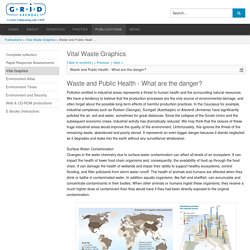
We have a tendency to believe that the production processes are the only source of environmental damage, and often forget about the possible long-term effects of harmful production practices. In the Caucasus for example, industrial complexes such as Rustavi (Georgia), Sumgait (Azerbaijan) or Alaverdi (Armenia) have significantly polluted the air, soil and water, sometimes for great distances. Which Countries Create the Most Ocean Trash? How Big Is the "Great Pacific Garbage Patch"? Science vs. Myth. UPDATED FEBRUARY 7, 2013 -- While everything may be bigger in Texas, some reports about the "Great Pacific Garbage Patch" would lead you to believe that this marine mass of plastic is bigger than Texas—maybe twice as big as the Lone Star State, or even twice as big as the continental U.S.
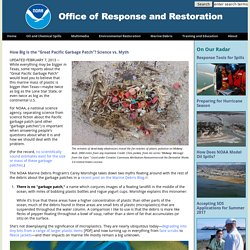
For NOAA, a national science agency, separating science from science fiction about the Pacific garbage patch (and other "garbage patches") is important when answering people's questions about what it is and how we should deal with the problem. SF Environment: Our Home. Our City. Our Planet. Why the Plastic Disclosure Project? - Plastic Disclosure Project. PDP asks the business world to measure, manage, reduce and benefit from plastic waste in order to create a world in which plastic adds value for consumers and businesses without negatively impacting the environment.

Did you know that although plastic is beneficial to our daily lives in so many ways, that there are some issues that result when we don't treat it as a resource: Roughly 33% of plastic is for single use, and then thrown away.Approximately 85% of total global plastic used is not recycled.Plastic has the potential to stay in the environment for hundreds of years.Plastic negatively impacts over 700 species of animals and birds. Plastic pollution is a global problem with long-lasting environmental impact if not dealt with properly at the end-of-life (as a resource, instead of a waste product).
The Great Pacific Garbage Patch" Garbage Dump in the Middle of the Pacific Ocean. Sometimes, people are lazy and don't want to get up and find a trash can.
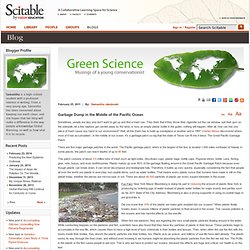
They think that if they throw their cigarette out the car window, spit their gum on the sidewalk, let a few napkins get carried away by the wind, or toss an empty plastic bottle in the gutter, nothing will happen. After all, how can this one piece of trash cause any harm to our environment? Well, all this trash has to build up someplace or another and in 1997 Charles Moore discovered where most of it has accumulated - in the middle of our ocean. It's a garbage patch so big that the state of Texas can fit into it twice. The Great Pacific Garbage Patch. There are five major garbage patches in the world. This patch consists of about 3.5 million tons of trash such as light bulbs, Styrofoam cups, plastic bags, bottle caps, Popsicle sticks, bottle, cans, fishing gear, nets, buoys, and even toothbrushes.
Did you know that 10% of the plastic we make gets emptied into our oceans? Image source: Norway UN (via Flickr) The trash vortex. You could save a turtle’s life by using less plastic and making sure your garbage is properly managed.
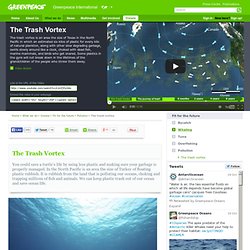
10 things you should know about the Great Pacific Garbage Patch - Gridovate. Trash in our oceans isn’t something to think about only on World Oceans Day, or when yet another odd piece of debris from the 2011 Japan tsunami washes up on distant shores.
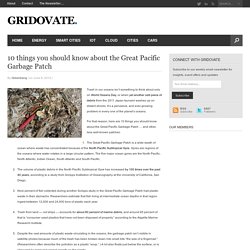
It’s a pervasive, and ever-growing problem in every one of the planet’s oceans. For that reason, here are 10 things you should know about the Great Pacific Garbage Patch … and other, less well-known patches: The Great Pacific Garbage Patch is a wide swath of ocean where waste has concentrated because of the North Pacific Subtropical Gyre. Gyres are regions of the oceans where water rotates in a large circular pattern. As we observe yet another World. MPCA%20Burn%20Barrel%20FS.pdf. Great Pacific Garbage Patch. The Great Pacific Garbage Patch is a soupy collection of marine debris—mostly plastics.

Photograph by Ray Boland, NOAA. This file is licensed under the Creative Commons Attribution 2.0 Generic license. Worldwide Garbage Patches The Great Pacific Garbage Patch is not the only marine trash vortex—it’s just the biggest. The Atlantic and Indian Oceans both have trash vortexes. Strange CargoWhen ships are caught in storms, they often lose cargo to the oceans. In 1990, five shipping containers of Nike sneakers and work boots were lost to the Pacific in a storm. Quotable Captain"So on the way back to our home port in Long Beach, California, we decided to take a shortcut through the gyre, which few seafarers ever cross. Plastics in the Ocean Affecting Human Health. Author: Gianna Andrews This case study is part of a collection of pages developed by students in the 2012 introductory-level Geology and Human Health course in the Department of Earth Sciences, Montana State University.
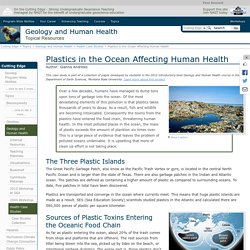
Learn more about this project. Mountain of Plastic. Photo credit: Top News, "Scientists Baffled by Mystery of Missing Ocean Plastic", Jamie Williamson, Over a few decades, humans have managed to dump tons upon tons of garbage into the ocean. Pacific vortex. 602 × 333 - local-info.co.za. 13 Threatened Animals Of The Ocean (PHOTOS) 22 Facts About Plastic Pollution (And 10 Things We Can Do About It) It seems nearly impossible to escape plastic in our every day lives, doesn’t it?
And we can’t escape plastic pollution, either. Plastic is literally at my fingertips all day long. Plastic keyboard. Plastic framed computer monitor. Plastic mouse. Plastic 'Trash Islands' Forming In Ocean Garbage Patch. After returning from the Transpacific Yacht Race — an annual sailboat race from Los Angeles to Honolulu — in 1997, Capt. Charles Moore was guiding his boat through the doldrums when he noticed some plastic debris floating in the water.
Though it didn't seem like an overwhelming amount of trash, he recorded log entries every hour, noting the bits of debris in the water. Toothbrushes. Bottle caps. Eel traps. Plastic Pollution in Oceans. Environmental Issues > Oceans Main Page > All Oceans Documents The Basics We're treating the oceans like a trash bin: around 80 percent of marine litter originates on land, and most of that is plastic. Plastic that pollutes our oceans and waterways has severe impacts on our environment and our economy. Seabirds, whales, sea turtles and other marine life are eating marine plastic pollution and dying from choking, intestinal blockage and starvation. Scientists are investigating the long-term impacts of toxic pollutants absorbed, transported, and consumed by fish and other marine life, including the potential effects on human health. Read more » What it Means to You. Trash Islands - the Ocean Garbage Patch. As our global population expands so too does the amount of trash we produce.
A large portion of this trash then ends up in the world's oceans.